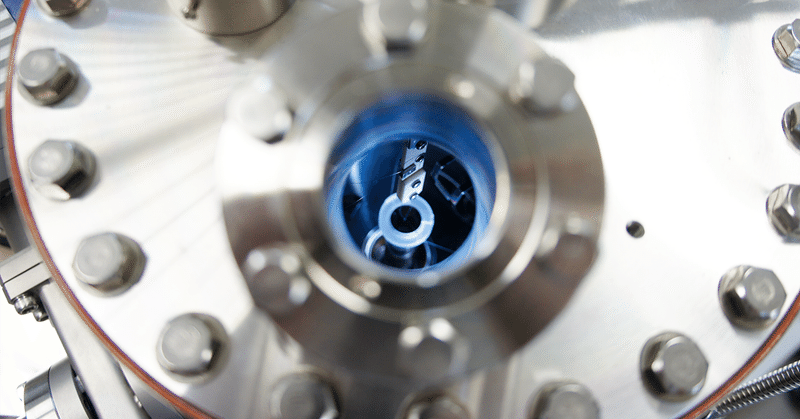
Technical considerations Hydrogen embrittlement
Hydrogen embrittlement
Hydrogen embrittlement (English: hydrogen embrittlement) is a phenomenon in which the strength (ductility or toughness) of a steel material decreases due to hydrogen absorbed into the steel material.
overview
This is a phenomenon in which metal strength deteriorates in all metal materials due to hydrogen intrusion. Also called hydrogen embrittlement or hydrogen fragility. This phenomenon is unique to hydrogen because the hydrogen ion is a very small cation with a diameter of 1 fm, which is only 1/100,000 times the size of a normal atom or ion, which has a diameter of 0.1 nm. This is because they easily invade and diffuse into metal bonds containing free electrons. As a result, hydrogen has become a substance that is difficult to handle with metallic materials.
Hydrogen embrittlement is thought to be caused by hydrogen absorption during corrosion, welding, pickling, electroplating, etc. This destruction due to hydrogen absorption is also called "delayed destruction." Hydrogen embrittlement fracture is likely to occur at grain boundaries, locations where tensile stress is applied, and areas where stress is concentrated. This problem is known to have plagued the development of the Haber-Bosch method. For example, steel in an acidic solution may suddenly crack, but this is due to hydrogen ions in the solution penetrating into the steel and making it brittle. These are problems that have been recognized for a long time.
Research on hydrogen embrittlement has been conducted for a long time and is still being conducted extensively. However, there are many influencing factors that cause embrittlement, including materials, stress, and the environment, and their true nature is still unclear.
Hydrogen embrittlement is a phenomenon related to the localization of diffusible hydrogen, so in addition to the amount of hydrogen, parameters related to diffusion such as time and temperature, stress state (stress triaxiality), strain, and the original material are also important. It also depends on the strength. In addition, it is difficult to understand the behavior of diffusible hydrogen in materials, and these factors hinder fundamental elucidation.
There are many examples where hydrogen embrittlement has become a problem, such as in the development of rocket engines that use hydrogen as fuel and the development of engines for hydrogen fuel cell vehicles. Some metals have the property of absorbing hydrogen, so once exposed to hydrogen, the problem of hydrogen embrittlement arises. In particular, the strength and ductility of stainless steel deteriorates significantly due to hydrogen, so by limiting its use to low-strength materials, that is, materials with low hydrogen sensitivity, or by applying dehydrogenation (baking) treatment, A temporary solution has been obtained. At this time, hydrogen atoms that have penetrated into the metal crystal lattice become metal hydrides.
Currently, there is a strong demand for lighter weight and higher strength, including from the perspective of environmental issues, and high stress designs for structural parts are becoming necessary. If we try to maximize the performance of metal materials closer to their limits, we can no longer limit ourselves to using only low-strength materials, as was the case with the stainless steel solution mentioned above, and hydrogen embrittlement becomes a problem. . For this reason, there is an increasing need to elucidate the mechanism and find a fundamental solution.
countermeasure
In 2010, a research group from Kyushu University and the National Institute of Advanced Industrial Science and Technology (AIST) discovered that, contrary to the common wisdom that infiltrating a large amount of hydrogen into stainless steel reduces the metal's strength, it actually impairs its fatigue strength properties. I found that there was a significant improvement.
In 2013, research groups including the International Institute for Carbon-Neutral Energy Research (I2CNER) at Kyushu University and Sandia National Laboratories in the United States discovered that metal fatigue could be suppressed by adding oxygen to hydrogen. In addition to discovering this, he also succeeded in formulating it. This is because oxygen is preferentially adsorbed on the crack surface within the metal and prevents hydrogen atoms from entering.
To eliminate hydrogen embrittlement, there are methods such as heating to reduce the amount of hydrogen and putting an aluminum coating inside the hydrogen tank.
use
On the other hand, there are also examples of utilizing hydrogen uptake in metals. Some hydrogen-absorbing alloys show the phenomenon of pulverization during the absorption/release cycle. In addition, a method of pulverizing raw materials by utilizing this phenomenon is also used in the manufacturing process of rare earth magnets. The possibility that deuterium atoms occluded in palladium may be involved in cold fusion is also being discussed.
Hitachi-GE Nuclear Energy is considering using hydrogen embrittlement to crush molten core debris when removing it from nuclear reactors that have experienced core meltdown.
氢脆
氢脆(英文:Hydrogen Embrittlement)是由于钢材吸收氢而使钢材的强度(延展性或韧性)降低的现象。
概述
这是所有金属材料中由于氢侵入而导致金属强度劣化的现象。 也称为氢脆或氢脆性。 这种现象是氢所独有的,因为氢离子是一种非常小的阳离子,直径为 1 fm,仅为正常原子或离子(直径为 0.1 nm)大小的 1/100,000 倍。 这是因为它们很容易侵入并扩散到含有自由电子的金属键中。 结果,氢成为一种难以用金属材料处理的物质。
氢脆被认为是在腐蚀、焊接、酸洗、电镀等过程中吸收氢而引起的。这种由于吸收氢而造成的破坏也称为“延迟破坏”。 氢脆断裂容易发生在晶界、拉应力作用的部位以及应力集中的部位。 众所周知,这个问题一直困扰着哈伯-博世方法的发展。 例如,钢在酸性溶液中可能会突然破裂,但这是由于溶液中的氢离子渗透到钢中并使钢变脆。 这些都是长期以来人们已经认识到的问题。
关于氢脆的研究已经进行了很长时间并且仍在广泛进行。 然而,引起脆化的影响因素有很多,包括材料、应力、环境等,其真正本质仍不清楚。
氢脆是与扩散氢的局域化有关的现象,因此除了氢的量外,与扩散有关的参数如时间和温度、应力状态(应力三轴性)、应变、原始材料也很重要。 这也要看实力。 此外,很难理解扩散氢在材料中的行为,这些因素阻碍了根本性的阐明。
氢脆成为问题的例子有很多,例如在使用氢作为燃料的火箭发动机的开发以及氢燃料电池汽车的发动机的开发中。 有些金属具有吸收氢的特性,因此一旦接触氢气,就会出现氢脆的问题。 特别是不锈钢的强度和延展性因氢而显着恶化,因此通过限制其使用于低强度材料,即氢敏感性低的材料,或采用脱氢(烘烤)处理,暂时解决了这一问题。 获得。 此时,已渗入金属晶格的氢原子变成金属氢化物。
目前,包括从环境问题的角度来看,对轻量化和高强度的需求强烈,并且结构件的高应力设计变得必要。 如果我们试图最大限度地发挥金属材料的性能使其接近其极限,我们就不能再局限于仅使用低强度材料,就像上面提到的不锈钢解决方案一样,氢脆就会成为一个问题。 。 因此,越来越需要阐明其机制并找到根本解决方案。
对策
2010年,九州大学和日本产业技术综合研究所(AIST)的一个研究小组发现,与普遍观点相反,即向不锈钢中渗入大量氢会降低金属的强度,实际上会损害其疲劳强度 强度特性。 我发现有了显着的改善。
2013年,九州大学国际碳中性能源研究所(I2CNER)和美国桑迪亚国家实验室等研究小组发现,通过在氢气中添加氧气可以抑制金属疲劳。 除了发现这一点之外,他还成功地阐述了这一点。 这是因为氧优先吸附在金属内部的裂纹表面并阻止氢原子进入。
消除氢脆的方法有加热减少氢量、在氢罐内部镀铝等方法。
使用
另一方面,也有利用金属吸收氢的例子。 一些吸氢合金在吸收/释放循环过程中表现出粉化现象。 此外,利用这种现象粉碎原料的方法也被用于稀土磁体的制造过程中。 钯中包藏的氘原子可能参与冷聚变的可能性也在讨论中。
日立通用电气核能公司
この記事が気に入ったらサポートをしてみませんか?
